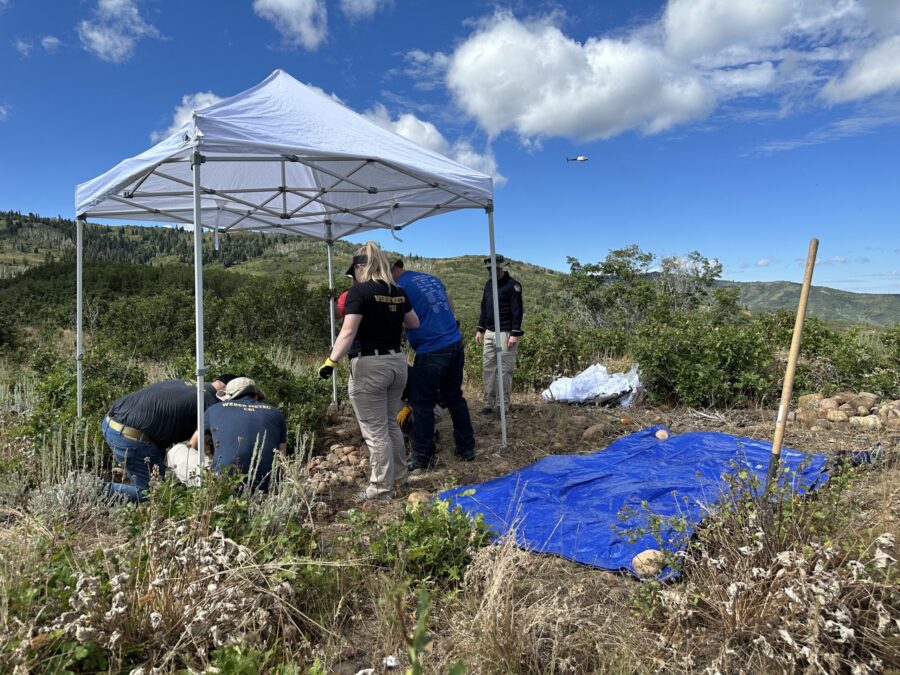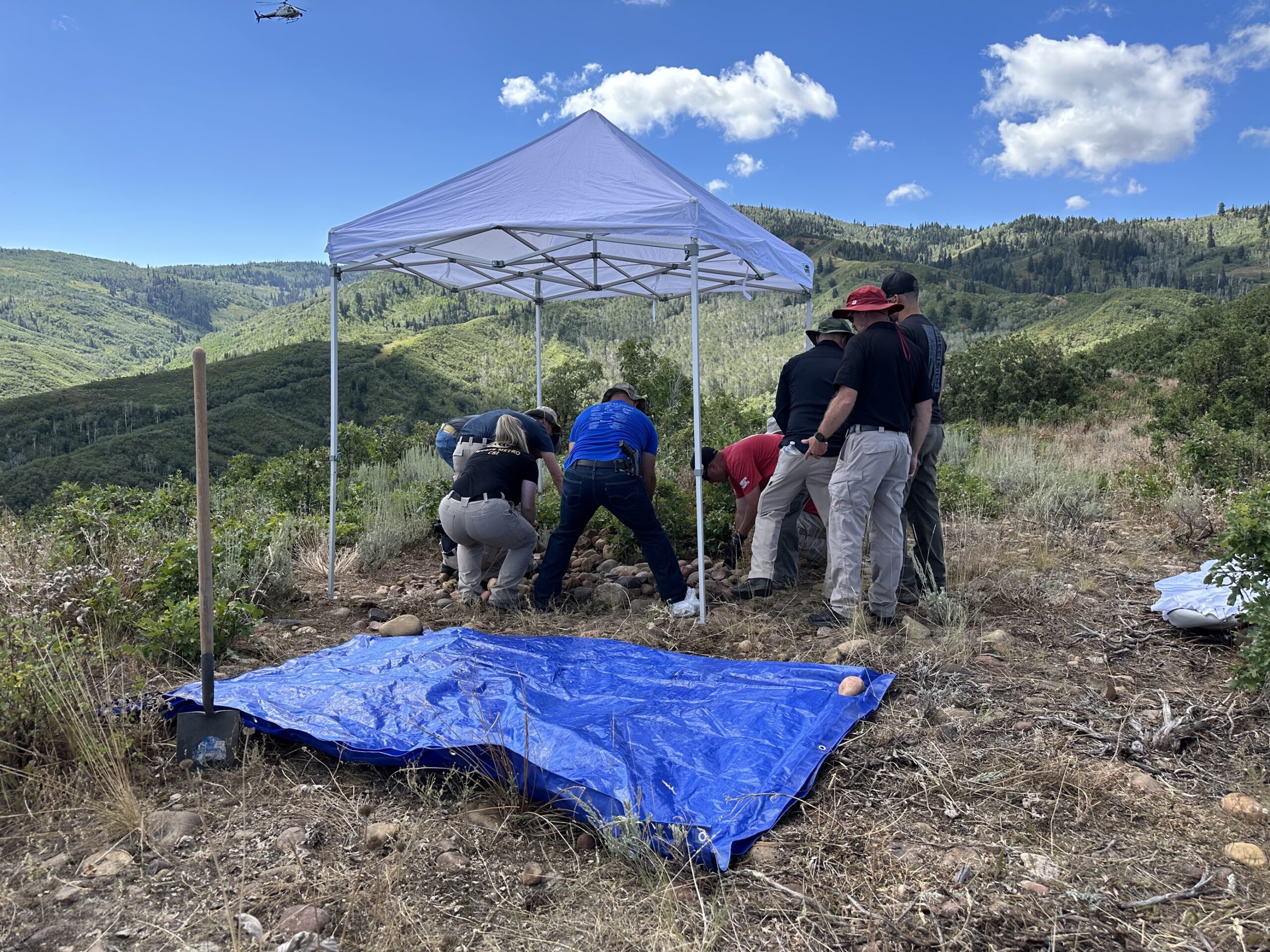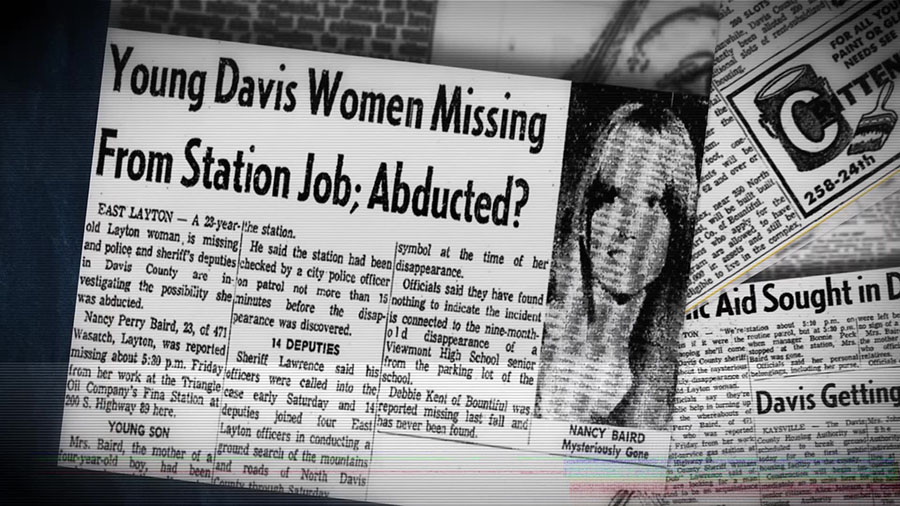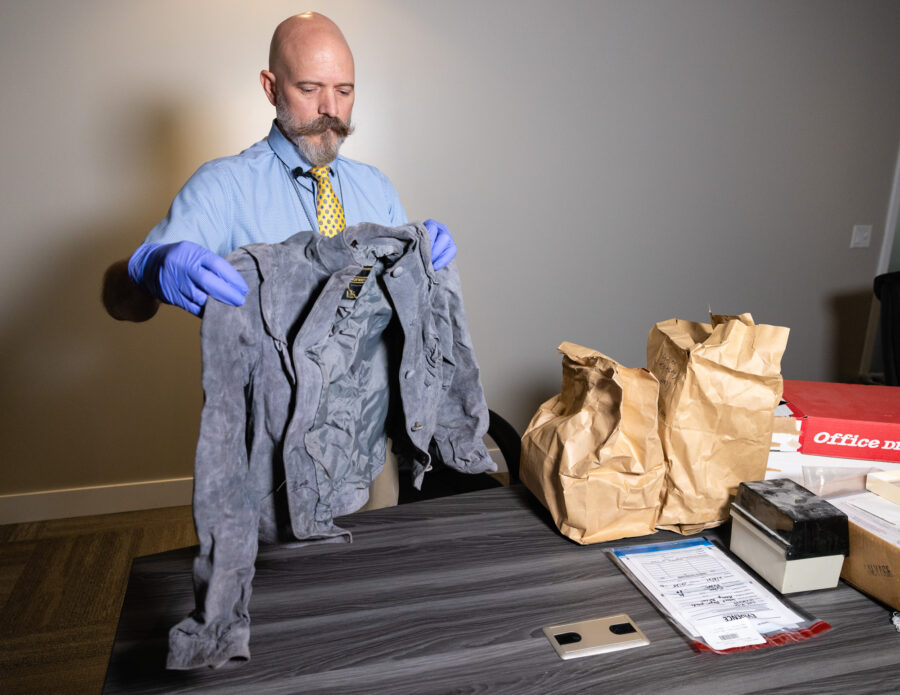Criminal Syndicate In Utah State Prison May Have Played Role In Theresa Greaves Murder
Jun 8, 2021, 11:04 PM | Updated: Jul 5, 2023, 4:33 pm
SALT LAKE CITY — A criminal syndicate operating out of the Utah State Prison in the early 1980s might have played a role in the suspected murder of Theresa Rose Greaves nearly 40 years ago.
Greaves was living in Woods Cross when she disappeared on August 5, 1983. Her skeletal remains were discovered on a hillside just east of U.S. Highway 89, near the border of Farmington and Fruit Heights, in February of 2015. It remains unclear who killed her or why.

A man walking his dog spotted a human skull at the bottom of this hillside near the border of Farmington and Fruit Heights, Utah on February 5, 2015. Investigators located a shallow grave containing the remainder of Theresa Rose Greaves’ remains soon after. (Dave Cawley/KSL Podcasts)
Woods Cross Police and the Davis County Sheriff’s Office are currently treating Greaves’ death as a cold case homicide. Police documents obtained by KSL’s investigative podcast COLD by way of an open records request reveal one of the current leads in the case relates to a series of August 1983 home burglaries that occurred in the same subdivision where Greaves’ remains were eventually recovered.
Circumstances of Theresa Greaves’ disappearance
Greaves grew up in New Jersey but moved to Utah with friends in 1980, largely to pursue her intense fandom for the Utah-based musical group The Osmonds.
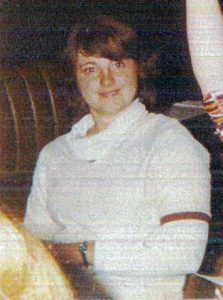
Theresa Greaves, pictured here in 1980, grew up in New Jersey but moved to Utah after becoming a member of The Church of Jesus Christ of Latter-day Saints. (Woods Cross, Utah Police)
She’d spent time in Ogden and American Fork before. In June of 1983, she rented a room in a mobile home in Woods Cross, near what is today the HollyFrontier oil refinery. Greaves was 23 and unemployed at the time of her disappearance, with no car. She was looking for jobs and had told her grandmother on the last day she was seen alive that she intended to take a bus into downtown Salt Lake City.
Police records indicate Greaves had told her roommate by telephone that day she intended to meet with someone for a job interview at the Rodeway Inn on North Temple in Salt Lake City, just east of Salt Lake City International Airport. Two days later, after Greaves failed to return home, the roommate reported her missing.
Woods Cross Police searched Greaves’ room as part of their missing persons investigation. The only items unaccounted for were a pair of shoes, Greaves’ purse and her 1977 Collingswood High School class ring. The ring was set with a blue stone and was inscribed inside the band with her initials, T.R.G.
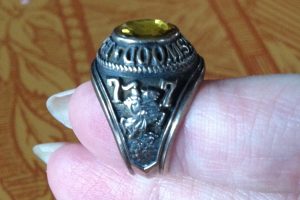
Theresa Rose Greaves wore a 1977 Collingswood High School class ring, similar to this one owned by a classmate. Greaves’ ring was set with a blue stone. (Woods Cross, Utah Police)
That ring, potentially a key piece of evidence in the case, has never been located.
Somerset Farms burglaries
On August 7, 1985 — the same day Greaves was reported missing and two days after she was last seen — Davis County Sheriff’s Office records report that a man named Daniel Olsen Ranquist burglarized a home on Kingston Road in Farmington. According to the records, a week later, Ranquist and an accomplice burglarized a second home a mile to the north, on Eastoaks Drive in Fruit Heights.
In both instances, Ranquist entered the homes while the residents were away and stole jewelry and rifles. Police later recovered some, but not all, of the stolen jewelry from pawn shops in the Salt Lake Valley.
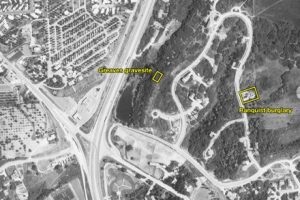
This May 1, 1985 aerial image shows U.S. Highway 89 near the border of Farmington and Fruit Heights, Utah. Daniel Ranquist burglarized a home on Kingston Road, to the right of center, two days after Theresa Greaves disappeared. Greaves’ remains were located in a shallow grave to the west of Kingston Road in 2015. (Idaho Air National Guard with annotations by COLD)
Witnesses in both burglary cases told police they’d seen a man matching Ranquist’s description in the area on the days of the burglaries, driving a green Volkswagen Squareback. One witness from the first case said he’d seen a man, later identified by police as Ranquist, coming out of the brush on the west side of Kingston Road and that he “appeared to be looking for something in the bushes, or the oak brush.” Investigators traced the car’s registration to Ranquist’s ex-wife, who was then living in the basement of a home just off 300 West and 500 North in Salt Lake City.
300 West is a primary artery for Utah Transit Authority bus traffic between Salt Lake City and its northern suburbs, including Woods Cross. It’s the route Greaves would’ve likely taken into Salt Lake City on the day she disappeared.
Daniel O. Ranquist
Ranquist was a convicted felon who’d served time in the Utah State Prison for aggravated robbery beginning in July of 1980. In June of 1983, Ranquist was released from prison into the custody of a halfway house called the Lakehills Community Corrections Center.
The halfway house was actually a motel leased by the state, where state prison inmates were supervised while transitioning back into society. It sat near 1900 West North Temple, less than half a mile east of the Rodeway Inn where Greaves’ roommate had told police Greaves planned to meet an unidentified person for a job interview on the day of her disappearance.
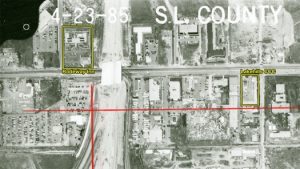
This April 23, 1985 aerial image shows the North Temple corridor between Redwood Road and 2200 West. I-215, which was under construction at the time, is visible to the left of center. (Salt Lake County, Utah with annotations by COLD)
Davis County deputies arrested Ranquist at the halfway house on August 18, 1983. Ranquist subsequently admitted to carrying out the two burglaries in Farmington and Fruit Heights. He provided police with detailed information about the jewelry he’d stolen and where he’d pawned the items.
Ranquist ended up pleading guilty to 3rd degree felony theft in the first burglary case. Prosecutors declined to file charges against him in the second case as a result of a plea bargain.
Police reports say Ranquist was at first unwilling to identify his accomplice in the second burglary. He eventually did so, telling investigators the second man was his roommate at the halfway house, Gilbert Hunt.
The halfway house theft ring
Police in Bountiful were at the same time investigating Hunt as a suspect in an armed robbery that had taken place there on August 13, 1983. He was arrested days later in Pocatello, Idaho and extradited back to Utah.
Salt Lake County Sheriff’s Office records show a confidential informant in the Bountiful burglary case told the investigators an inmate at the Utah State Prison, possibly named Ronnie Gardner, had been organizing burglaries for inmates who’d been sent from prison to the Lakehills halfway house.
Ronnie Lee Gardner was at the time in 1983 serving a prison sentence for robbery. Later, in 1984, he would escape from custody and kill Melvyn Otterstrom at a tavern in Salt Lake City. After being recaptured, Gardner in April of 1985 shot and killed attorney Michael Burdell while again attempting an escape.
Gardner received a death sentence for Burdell’s murder. He was executed by firing squad in 2010.
Ronnie Gardner and “the old man”
The informant also told police Gardner had been working with someone on the outside to arrange the thefts and to fence the stolen property. That person went by the nickname “old man.” The informant provided police a telephone number for the “old man,” which police learned belonged to a Midvale-based contractor.
The Somerset Farms subdivision in Farmington where Ranquist had carried out his burglaries was largely undeveloped at the time in 1983 and was frequented by contractors.
“I was driving, looking for some work,” Ranquist is quoted as saying in a transcript of a police interview following his arrest. “Stopped at one house where they was doing construction work inside, talked with them.”
Witness accounts from Ranquist’s first theft on August 7, 1983 show he knocked several doors on Kingston Road before finding the vacant home he ultimately burglarized, telling residents who’d answered he was a roofing contractor looking for work.
One witness from the first burglary told police he’d seen an individual matching Ranquist’s description coming out of oak brush on the west side of Kingston Road.
“The individual appeared to be looking for something in the bushes, or oak brush,” a police report indicates the witness said.
Theresa Rose Greaves’ remains discovered
When Theresa Greaves’ remains were located on February 5, 2015, they were largely contained to a shallow grave in a thick patch of oak brush just behind a home on the west side of Kingston Road. Property records and historical aerial imagery show the house had not yet been built in 1983.
“That was a new development under construction of new houses,” Davis County Sheriff’s Lt. Mike Valencia said in an interview for COLD.
Items of clothing were recovered along with Greaves’ skeletal remains, but her missing high school class ring was not found at the site despite a meticulous search by Davis County’s CSI team.
It was only after the recovery of Greaves’ remains that Woods Cross police and the Davis County Sheriff’s Office, working in collaboration, uncovered the possible connection to the Daniel Ranquist cases at the alleged halfway house theft ring.
Ranquist is deceased, leaving investigators to seek his past associates or any contractors who might have done work in the subdivision during the summer of 1983 in the hopes they might provide information leading to the identification of a suspect in Greaves’ death.
“We know that somebody’s out there, somebody out there caused her harm and it’s our job to identify who that person is and make them face the consequences of what they’ve done,” Assistant Woods Cross Police Chief Adam Osoro said.
Listen to the full episode
Season 2 of the COLD podcast will take you inside the no-body homicide investigation triggered by Yost’s disappearance. Audio tapes never before made public will allow you to hear Yost, in her own voice, describe the events which preceded her death.
You will learn why police suspected one man, Douglas Lovell, yet were unable to arrest him at the time. And you will see how some individuals and institutions gave — and continue to give — Lovell every opportunity to evade the ultimate penalty.
Hear Joyce Yost’s voice for the first time in the COLD podcast season 2, available to listen free on Amazon Music.
Free resources and help with sexual abuse are available 24/7 at RAINN.org. You can also call 800-856-HOPE (4673).



